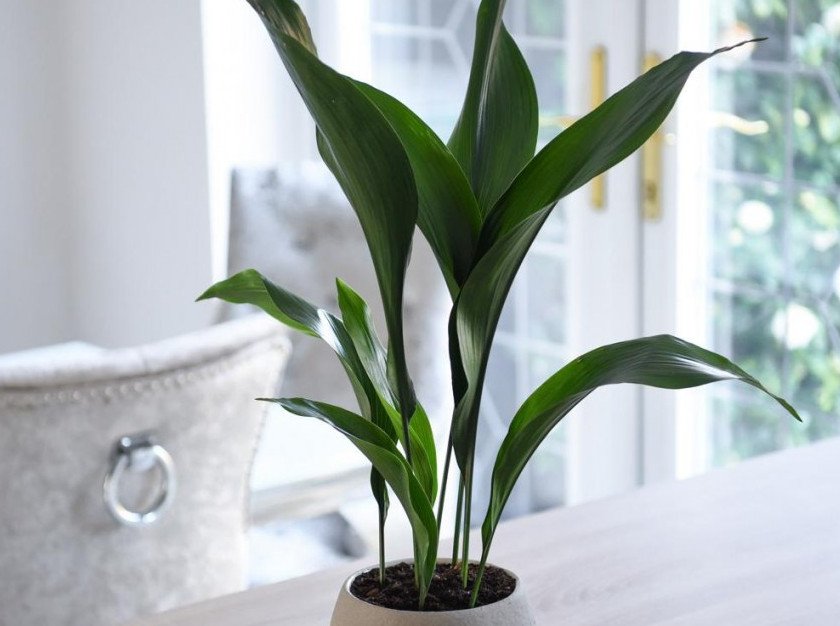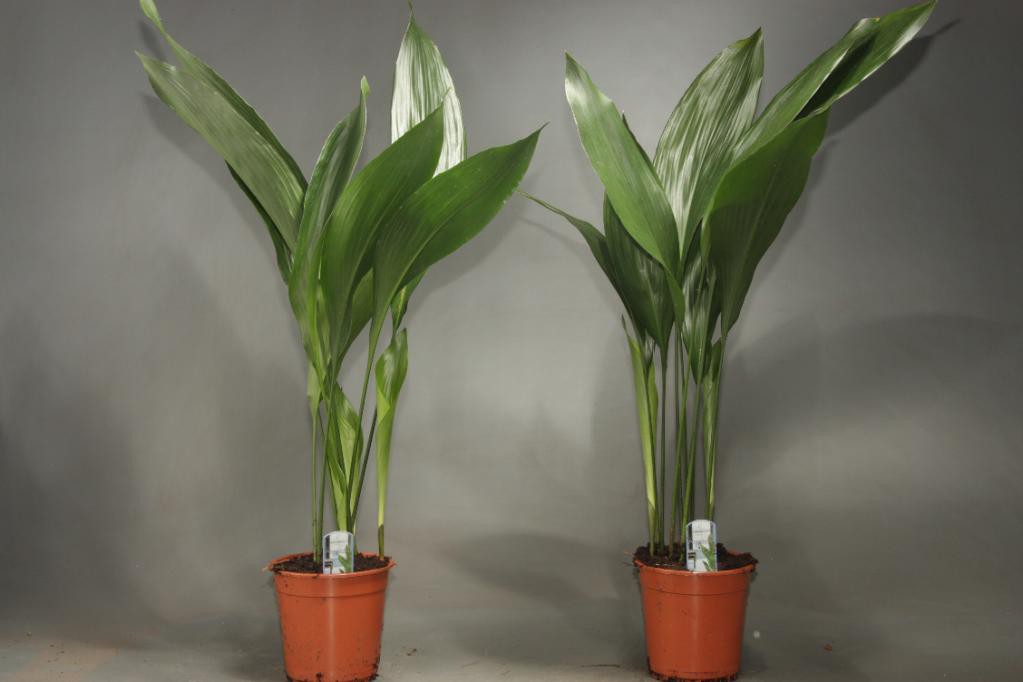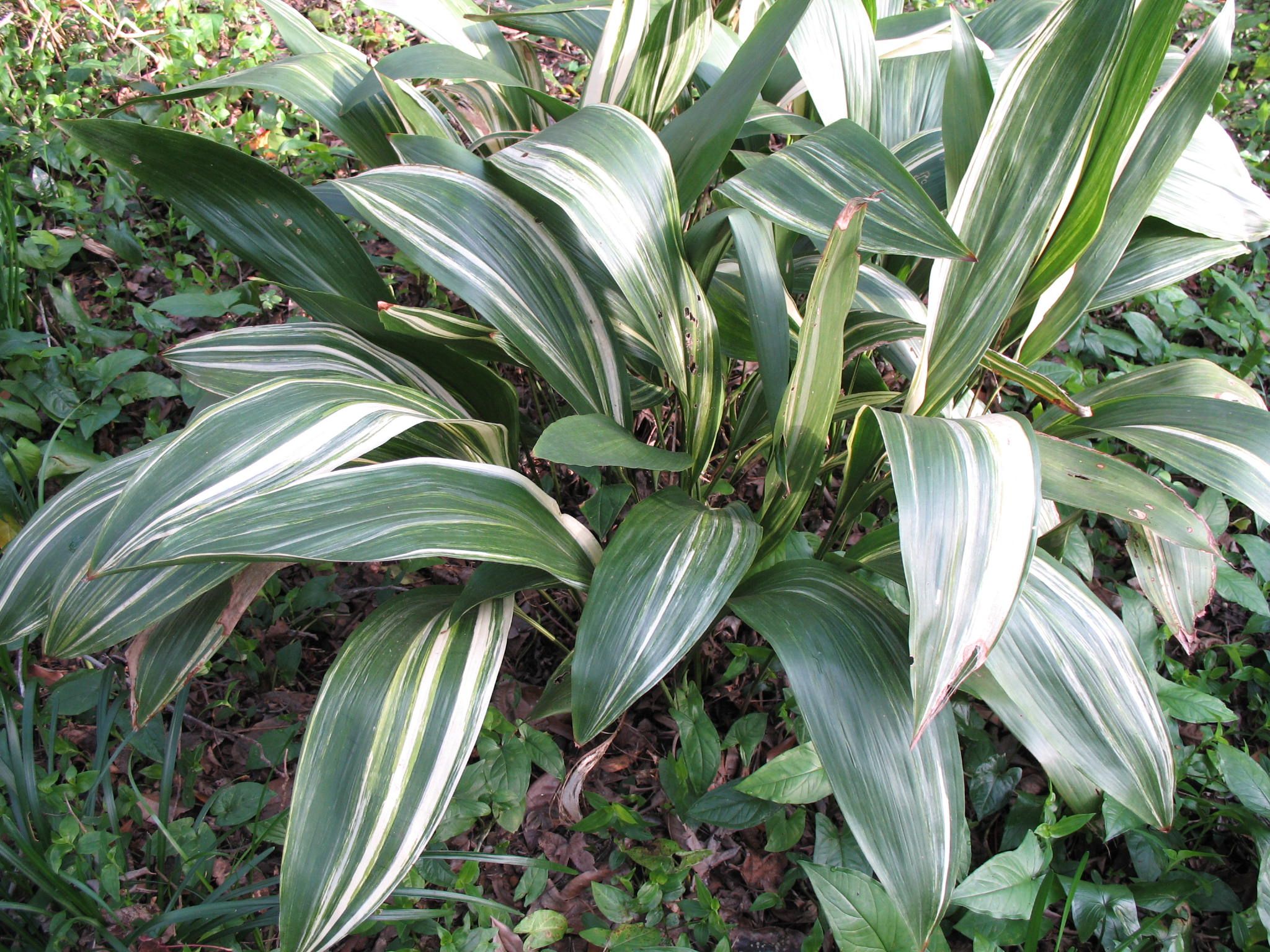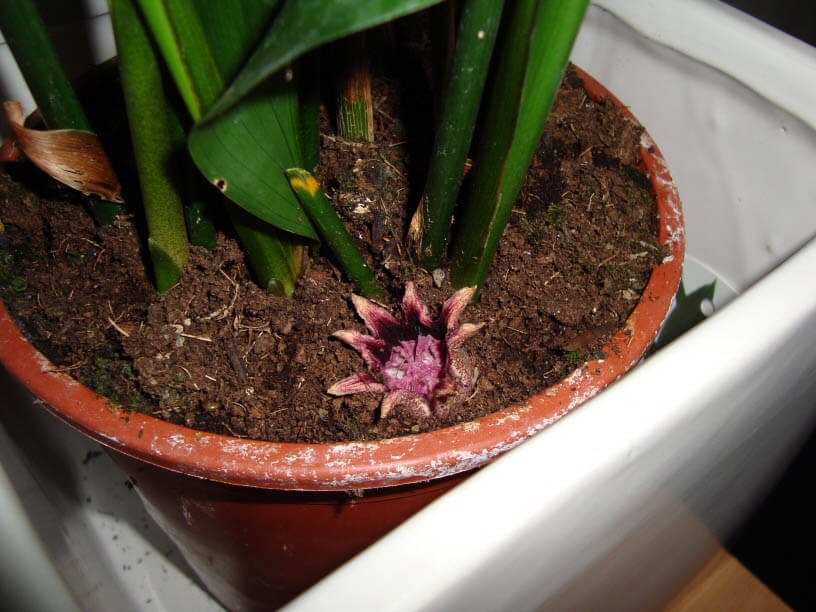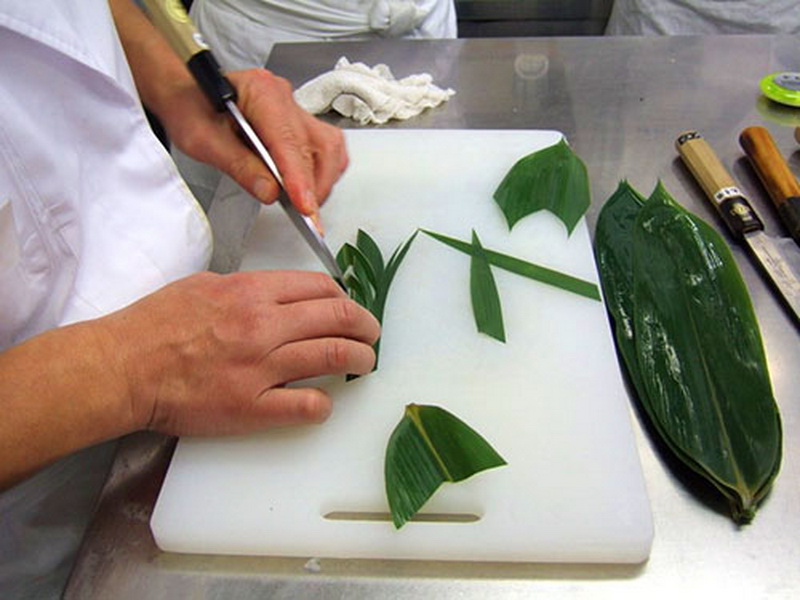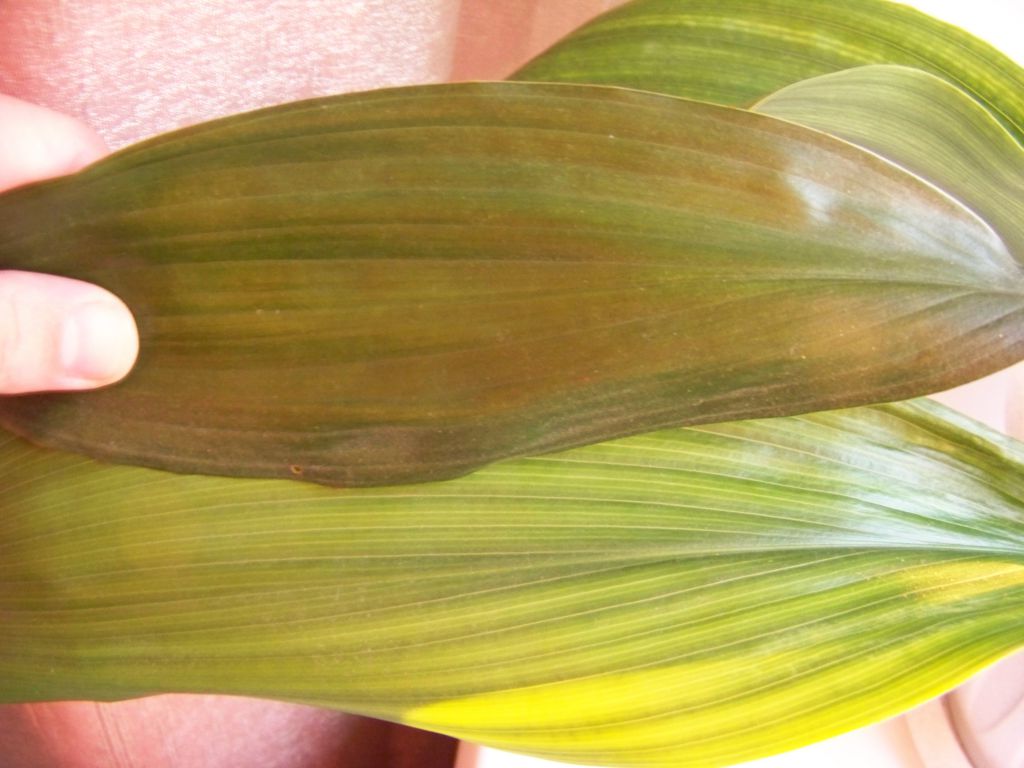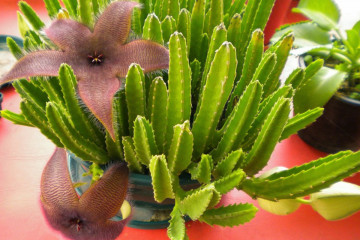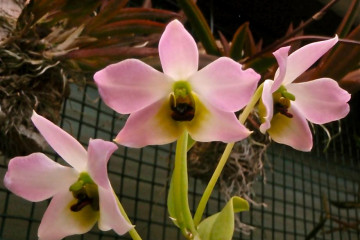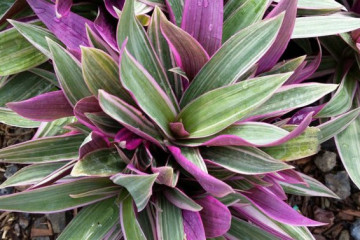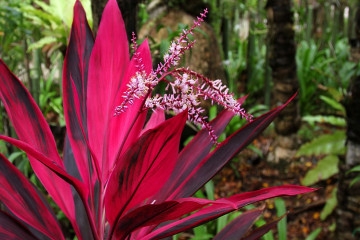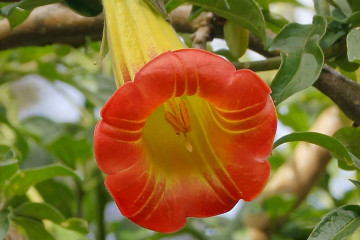Aspidistra flower: flower care options and propagation methods
Content:
Aspidistra is a perennial flower native to East Asia. Its other name - "snake index", means that snakes like to settle in it. A unique culture has properties beneficial to humans, collecting dust on its plates and destroying harmful bacteria and microorganisms. Aboriginal people use it to treat many diseases.
Main types
The origin of the word "aspidistra" is Greek: its two components are translated as "shield" and "star". The culture belongs to the Asparagus family and has an underground creeping rhizome.
In the description of the aspidistra, there are 98 varieties, but only 7-9 of them are known as a houseplant. An evergreen stemless plant has large, fleshy leaves. The height varies from 25 to 30 cm. Flowering lasts only one day, therefore, when drawing up floristic compositions and bouquets, the greenery of the culture is used.
The most common aspidistra species in indoor floriculture are:
- High,
- Elatior,
- Attenuata,
- Large-flowered,
- A friendly family,
- Sichuan,
- Oblantsefolia,
- Variegated,
- Guangzhou,
- Bloom,
- Milky Way,
- Amanogawa.
High
Aspidistra high is a very large shrub. In nature, its height reaches a little less than a meter - 0.8 m.At home, it is somewhat more modest - 0.6-0.7 m.Leaf plates are 0.5 m long and 0.1 m wide.
Foliage:
- Its shape is pointed, oblong, somewhat similar to the "Sharp tongues" plant.
- The color is bright green, glossy.
With development and growth, the bush actively grows, becomes lush, like a fountain.
Friendly family
Among the aspidistra Friendly family, the balcony or terrace is considered the most favorite place for growing. This species loves watering, does not tolerate drying out of the soil. This is a tall subspecies, differing only in not such large sizes.
Elatior
Aspidistra Elatior is often referred to as high. Some growers believe that Elatior is the tall aspidistra.
It develops and grows best in its homeland - in Asia. Flowering in the natural environment begins at the beginning of the year and continues until the onset of rains in April. Flowers are single, up to 2 cm in diameter, violet-red in color.
Variegated
Aspidistra variegated, like tall, is most often grown at home. Its height is small, up to 50 cm, but the bush can become spreading, grow.
This species is capricious, it needs constant care, monitoring of air humidity, lighting and feeding.
The foliage of the Variegata variety is dark green with vertical cream stripes.
Other types
There are not so many varieties of aspidistra indoor plants, one of the most colorful and attractive is the Milky Way (or Milky Way).
A small shrub 40-60 cm in height, the foliage on it is strewn with small white dots, as if scattered in the sky. Blooms in March.
The plant is very unstable to either drought or extreme cold. It grows extremely slowly.
Home care
Aspidistra home care is simple and does not require much effort. The most important thing is to remember that the plant cannot tolerate a large number of transplants. It is better to transplant for the first time 3-4 years after planting in a pot, if necessary.
Aspidistra is unpretentious in care, therefore, as the flower growers say, she is ready to withstand any conditions and take root wherever possible.
Temperature
The secret of the aspidistra's departure is that it is undemanding, very tenacious, although sometimes capricious.
This iron lady is neutral to temperature. She is able to withstand cold snaps up to +5 degrees, although it is always warm in her homeland.
Rules:
- In winter, it is better to keep the temperature up to +16 degrees;
- Avoid extreme heat in summer, optimally 20-22 degrees Celsius.
Humidity and watering
Strong moisture is dangerous for aspidistra in a pot. Therefore, an important rule is that it is better to underfill than to fill.
Rules:
- Watering every 4-5 days. Make sure that the soil does not dry out, water when the top layer has become slightly dry. In winter, watering once a week.
- Spraying is not essential, but the appearance of the flower will be much better.
- It is necessary to wipe the dust, a lot of it accumulates on the plates.
Lighting
Loves the shadow. The strong sun will wither away. If light spots appear on the foliage, it is worth taking the plant to the sun. The more spots, the more the culture needs sunlight.
Soil and fertilizing
Optimal soil:
- Sod land (2 parts);
- Humus, peat, leaf soil, sand (1 each).
Make-up is introduced from April to September every two weeks, using liquid top dressing: Agricola, Bona Forte, etc.
Bloom
How unusually aspidistra blooms, everyone who grew this plant will tell. If it was possible to achieve flowering, then the beauty will delight the hostess with a short, but such an extraordinary flower!
The buds of the culture are formed on the roots and look unique: small, pinkish-purple inflorescences with a brown tint, somewhat reminiscent of a star. It blooms for only one day, after which it forms a fruit in which the grains are located.
Reasons for the lack of flowering
Blooming of aspidistra at home is rare, since the growing and keeping conditions for this must be ideal. It is very difficult to achieve this in the European zone.
You can try feeding the plant with phosphorus and potassium, which help set buds. It is also good to loosen the soil so that the inflorescences can form and open up.
Reproduction methods
The methods of reproduction of aspidistra are:
- Division of the bush.
- Seeds. Planting is done in spring.
- Sheet. The best, strong leaf is selected, dried and placed in a bottle of water.
- Rhizome is one of the easiest ways. It must be carried out with a plant that has reached 5 years of age. Carefully carry out the procedure - the roots of the flower are very fragile.
Possible diseases
Various diseases are found in aspidistra room. Some of them can be prevented or cured instantly by simply changing the lighting or watering conditions. Others take a long time and painstakingly to heal.
Most often, the leaf in aspidistra is affected: spots appear, the foliage turns yellow, withers, withers and falls off.
What problems happen:
- Brown spots on foliage indicate sunburn. It is worth immediately transferring the flower to the shade.
- Yellowing, wilting of foliage. The soil is too moist, the roots are rotting. Transplant the flower and stop watering abundantly.
- Leaf pallor, color is lost. The place is too dark. Transfer to where the light is diffused.
- The foliage has become brown, on it a cobweb - a spider mite disease. Treat the crown with "Aktellik", humidify the air by spraying.
- The foliage falls off, turns yellow, you can see pests on it - these are scale insects. Collect the pests by hand, disinfect the affected areas with soapy water. After processing "Karbofos" or "" Fufanon ".
- When infected with an infection, chlorosis, the foliage rapidly turns yellow, and its shade changes. It is impossible to treat such a disease - the plant should be destroyed in order to avoid contamination of other domestic crops.
The oldest plant in the world is called "cast iron" for a reason. With its unpretentiousness and lack of capriciousness in care, it is unlikely to be able to compare with any culture.
Video
